Welcome everyone to the TFB Armorer’s Bench! As mentioned in the little blurb below, this series will focus on a lot of home armorer and gunsmith activities. In this article, I decided to take a break from the more intensive activities to in the shop and commentate on a forgotten yet common World War I sidearm. This is the Spanish-made French-issued 1915 Ruby pistol. The commentary will be pretty cut and dry and you will see the reason. That is why we have a short field strip sprinkled in. Let’s dive right into it folks!
TFB Armorer’s Bench Commentary Articles:
- TFB Armorer’s Bench: Commentary on The Marlin Model 60
- TFB Armorer’s Bench: Commentary on the Remington 74 Series
- TFB Armorer’s Bench: Commentary on The Colt 1877 Revolvers
- TFB Armorer’s Bench: Commentary on The Winchester 150 & 190 Rifles
TFB Armorer’s Bench: The 1915 Spanish Ruby Pistol
Here, we at TFB hope to inform, entertain, and even inspire any would-be gunsmith or armorer out there. Ideally, with the information I provide and with the help of our sponsors, you can have some useful knowledge pertaining to the conservation and improvement of firearms technology while at the same time sharing experiences and teaching each other new tips and tricks along the way in the comments. Digging deep into what it is to be an armorer or gunsmith has significance but what is important is what those people do to show they’ve earned that title. I am happy to share my experiences and knowledge and hope it is informative!
Make your personal safety a priority:
- Practice proper gun safety. Always make sure before the firearm hits your bench that it is unloaded and safe to be handled.
- Wear the proper safety equipment. The main one would be safety glasses (decent ones) since parts are often under spring tension and you may work with high RPM tools. Other honorable mentions would be latex gloves or a respirator when working with potentially harmful solvents and oils. Also hearing protection when working with loud machinery or test-firing firearms.
- Modifications, alterations, and customizations will void your firearm’s warranty 9.5 times out of 10. Please take that into consideration before attempting any at-home gunsmithing.
- If you are unsure about proper safety practices, disassembly procedures, or warranty standards, stop, put down the tools, and consult a competent gunsmith.
Quick History: The 1915 Spanish Ruby Pistol
As we all know, World War I was a war of attrition. It was also a war of technological advancements. The world went from organized “honorable” fighting above ground to muddy fighting in trenches. Horses were traded out for tanks and in many cases revolvers for autoloading pistols. The Ruby was not a giant technological advancement by any means. It was a necessity.
When the war started, French soldiers (often officers and pilots) were issued France’s standard issue service sidearm, the Modèle 1892 otherwise known as the Lebel revolver. The Model 1892 was plenty of a revolver. In fact, it was ahead of its time in a lot of ways and far ahead of what US soldiers were being issued at the time of its adoption. The downside of the Lebel 1892 was it was expensive and time-consuming to make. When you are at war and have little time and resources, the Lebel 1892 was not an easy gun to get made and out the door. On top of this, autoloading handguns were quickly proving themselves on the battlefield.

Model 1892 Revolver. Rock Island Auction Company. (n.d.-c). French St. Etienne Model 1892 Revolver [Photograph]. Retrieved August 25, 2023, from https://www.rockislandauction.com/detail/1041/4260/french-st-etienne-model-1892-revolver

Savage 1907. Rock Island Auction Company. (n.d.-d). Savage Model 1907 Semi-Automatic Pistol [Photograph]. Retrieved August 25, 2023, from https://www.rockislandauction.com/detail/2053/154/savage-model-1907-semiautomatic-pistol
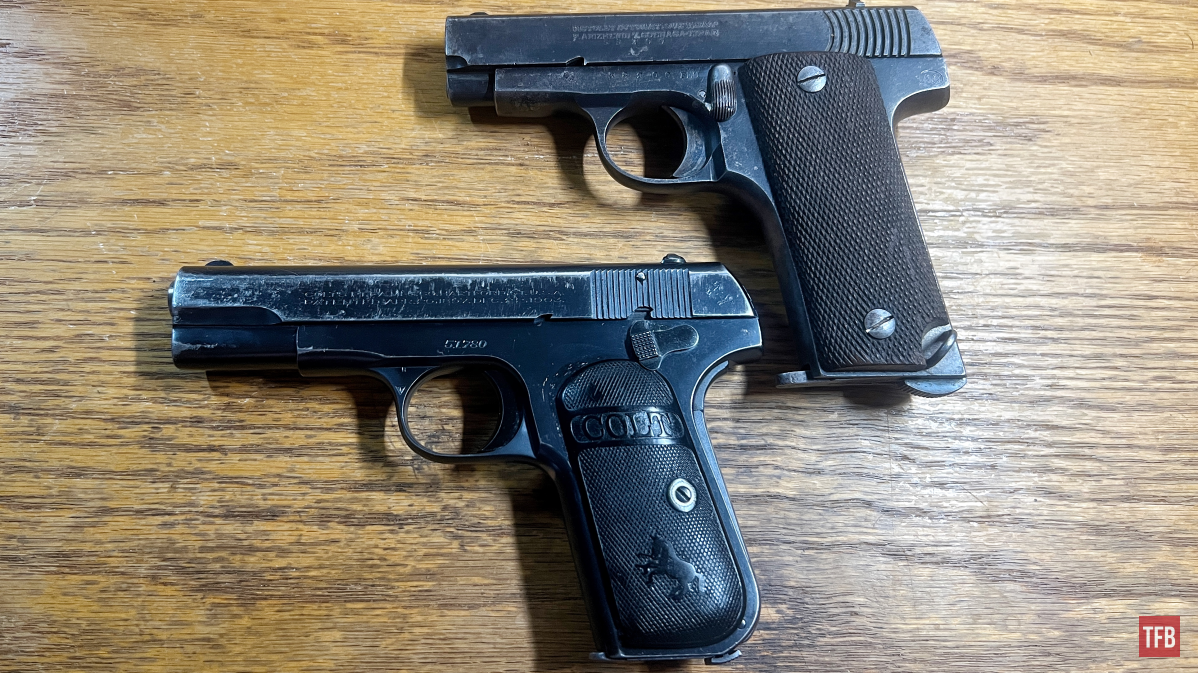
Many shops in Spain would produce Ruby pistols. They were all hand-fitted and almost nothing is interchangeable across the board, not even the magazines. This presented problems but not all. One notable issue was the way the safety worked. In short, soldiers who holstered their pistols had the potential to flip the pistol off safe and also flip it on safe when it was needed most. Some later Ruby pistols can be found with a large rivet on the side to eliminate this phenomenon.
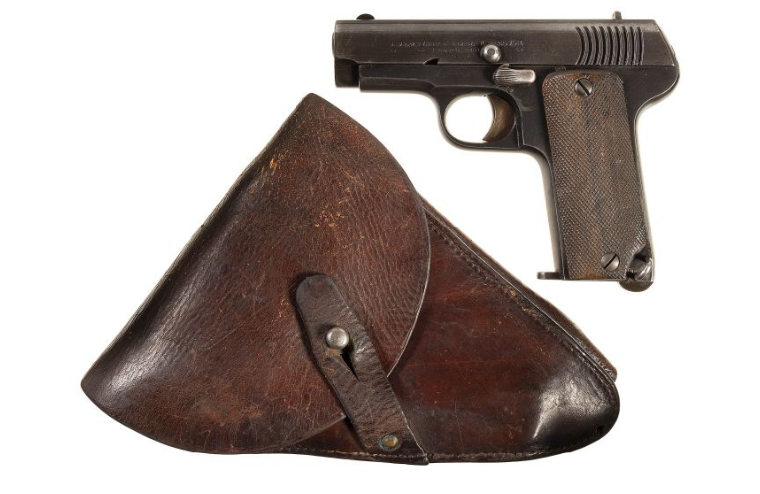
Ruby Pistol with rivet. Lot 572: Four European Semi-Automatic Pistols. (n.d.-c). Rock Island Auction Company. photograph. Retrieved August 24, 2023, from https://www.rockislandauction.com/detail/1036/572/four-european-semiautomatic-pistols.
Quick Field Strip: The 1915 Spanish Ruby Pistol
1. First thing is first! Practice all the rules of gun safety. When disassembling a firearm, you should always wear safety glasses due to multiple parts being under spring tension. Triple-check that the firearm is unloaded. Check the chamber, magazine, and the area in between. All set? Let us jump right into it!
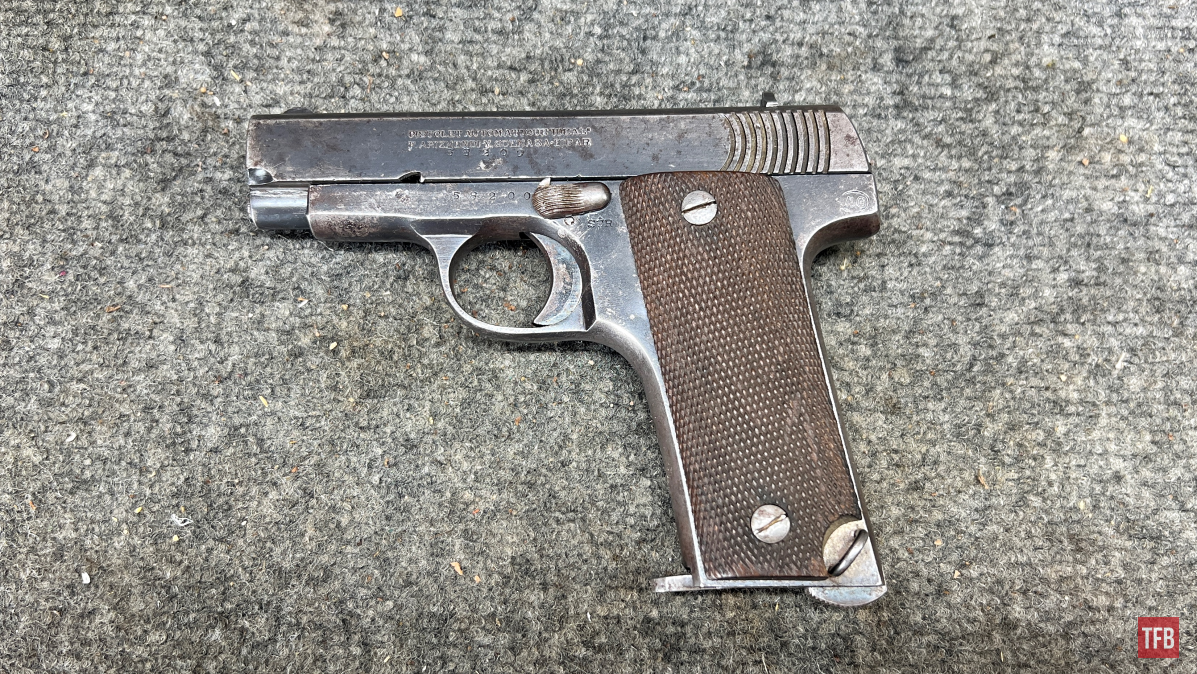
2. First we need to remove the magazine using the classic heel release (very soft heel release compared to others from this era).
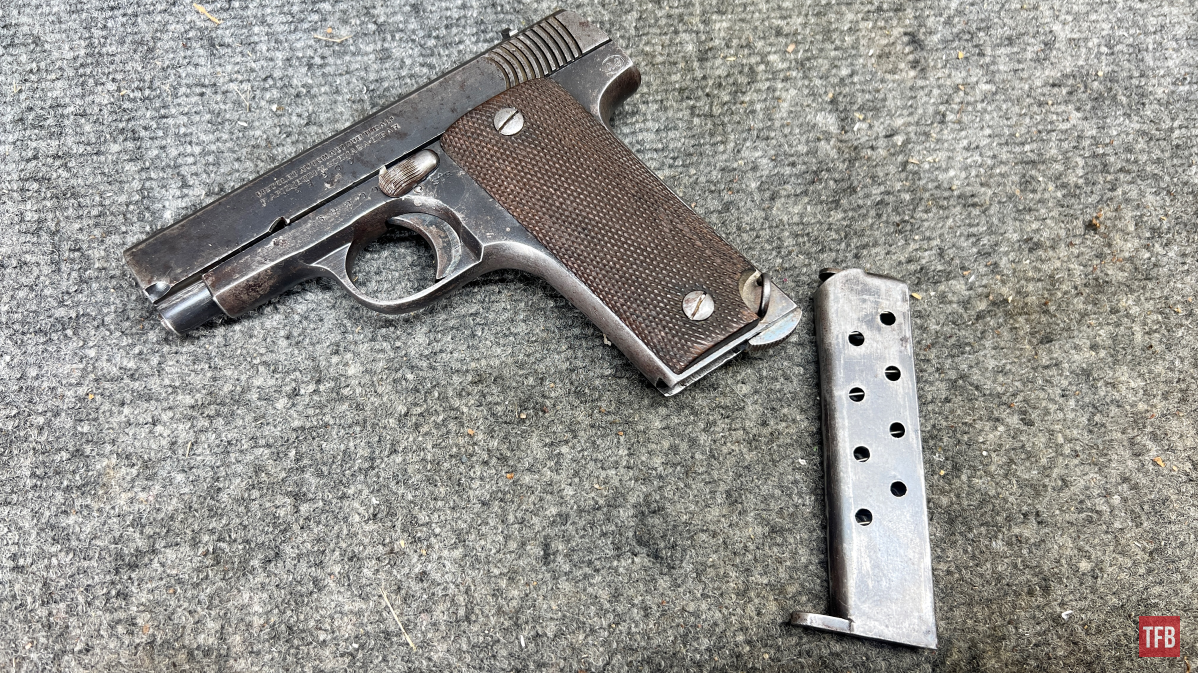
3. Next we need to lock the slide back by flipping the safety up into the locking notch.

Note: At this point, many pistols can continue onto step four but my pistol’s stop notch is mushed so I need to do a good old Glock hold in order to pull that slide back just a smidge further.

4. With the slide held back (may have to push or pull it back and forth to find the sweet spot) simply grip the barrel and twist it so the bottom lug rotates to the left or counterclockwise (looking from the rear of the gun).
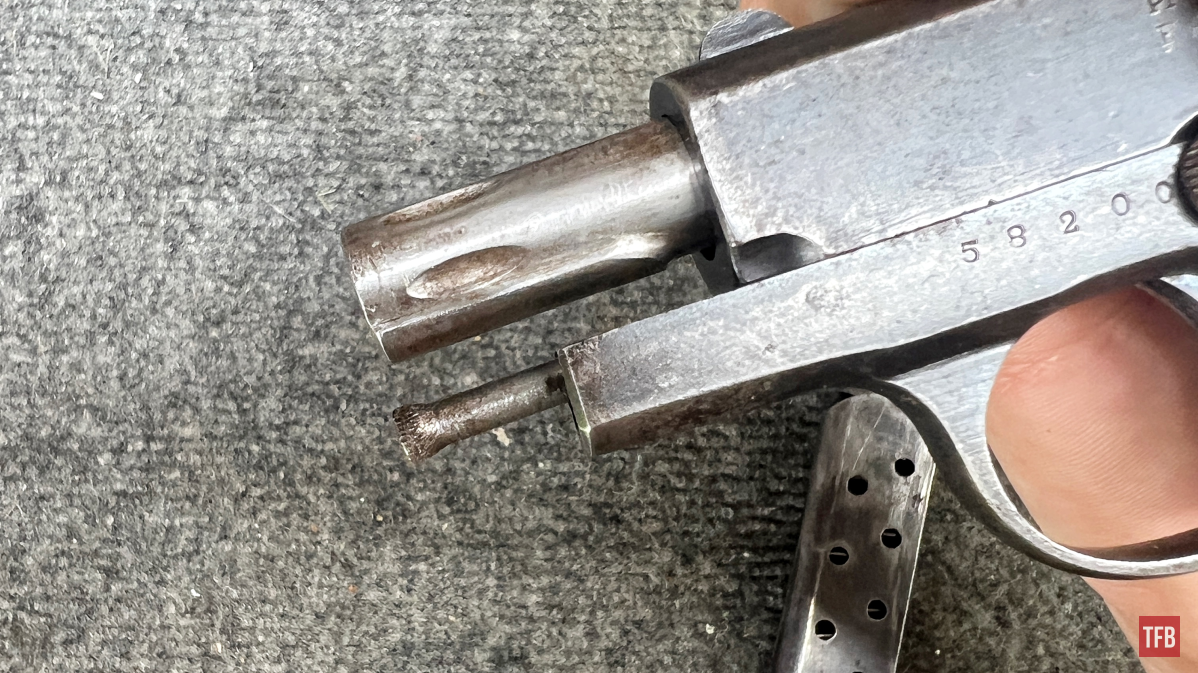
5. At this point the safety can be disengaged and the slide lowered. The slide will come off the frame along with the barrel.

6. The barrel can be twisted clockwise and removed out the front of the slide.
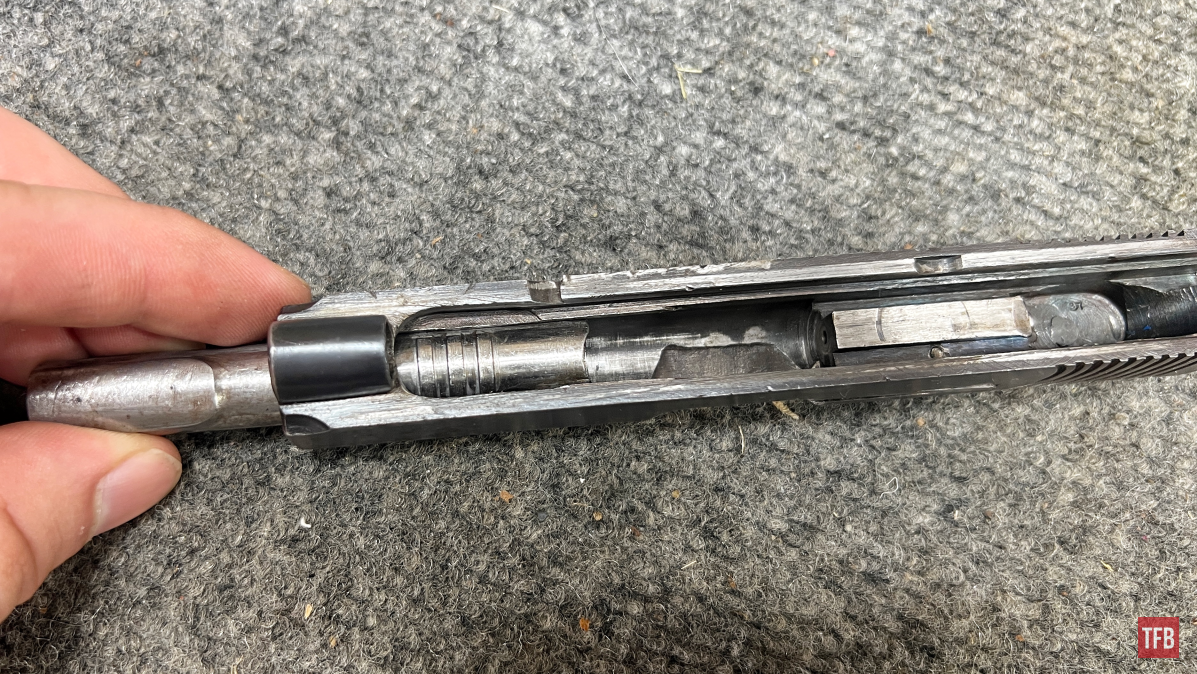
7. The guide rod sits in a hole in the frame. It is captive and can simply be pulled free.

Common Issues & Potential Reasons: The 1915 Spanish Ruby Pistol
There are a few facts to get out right away. These guns were not made with high-quality tooling and assembly lines. They were hand fit and it was done at a fast pace with little quality control. The metallurgy was lackluster so the Spanish made these some thick boys.

Speaking of the shotty metallurgy, it is not uncommon to find screws boogered as well as other various bits and pieces bent or worn out. For example, the slide lock cut has begun to mush down. it appears the slide lock’s hook is harder than the slide material.
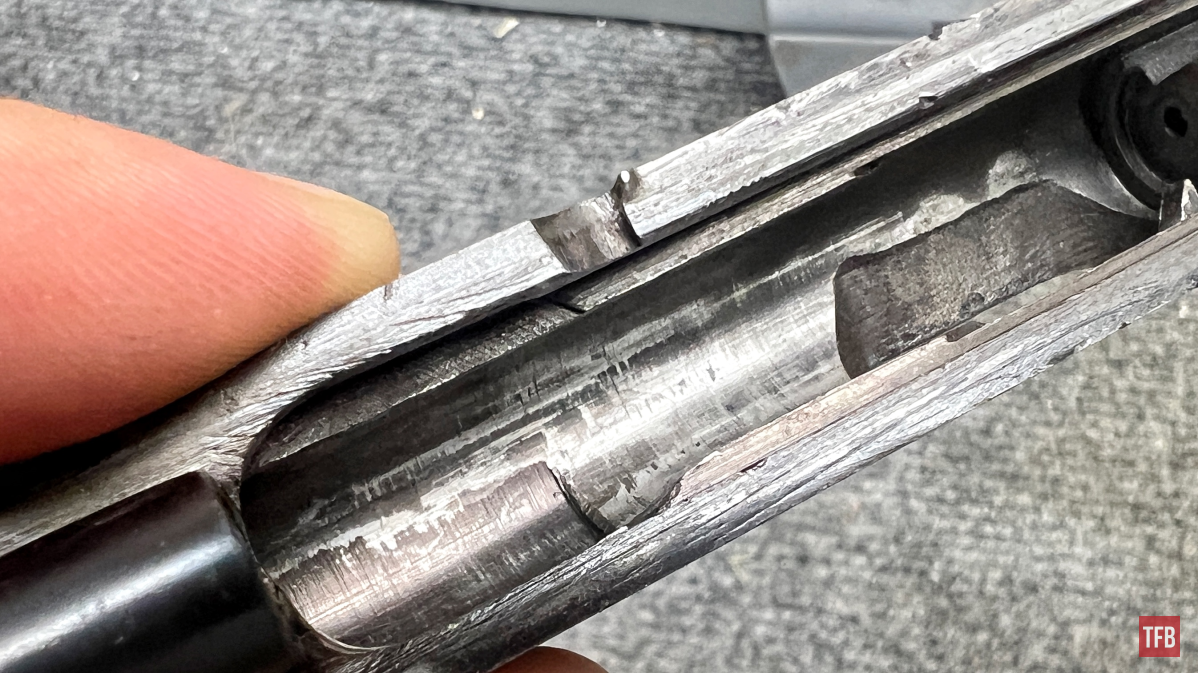
Magazine-fed firearms in the early 1900s were pretty seldom wanted because the magazines were so easy to damage. The Ruby pistol’s magazines are no different. the floorplate is not easily removed and the feed lips are terribly thin. Most Ruby pistols are marked by their maker on both the frame and magazine so ideally a magazine from that exact company would be able to replace a damaged one. My pistol and its magazine do not match up but luckily it still works.

This pistol suffers from what I would suspect many do – it has a weak extraction. The extractor itself is well-built and sharp. It grabs onto rims just fine but the 100-year-old four-coil spring is at its wit’s end.
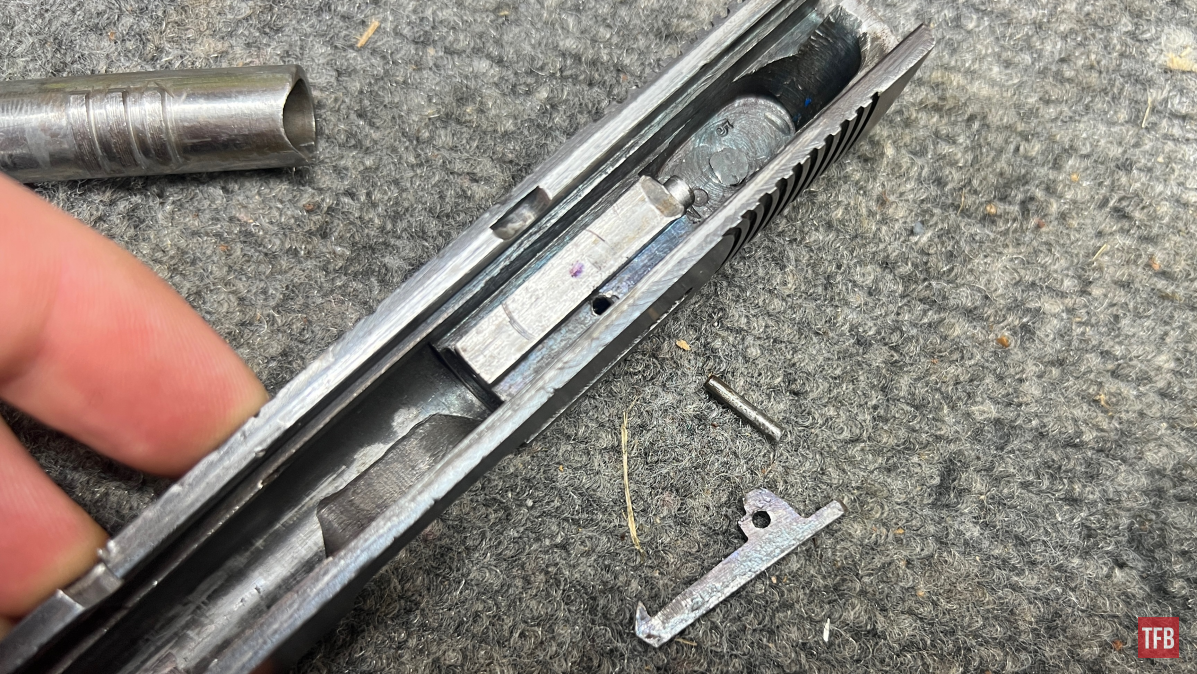
Last but most importantly and most commonly is the firing pin. The firing pins in every Ruby pistol out there are less than ideal. Some are literally peened in the bolt block and drilling and re-peening are needed to repair.

The sharpie mark is where a pin is commonly found peened in.
Luckily, my gun has the extractor pin holding in the firing pin as well. Firing pins bend or break frequently on these guns. Getting a click after a firing pin simply breaks off is fine. Oh well no harm to me then no foul.
However, given the soft nature of the materials, it is possible and known that the firing pin may become lodged in the port and turn the gun into a “runaway” gun. this is where the pistol will continue to fire regardless if the trigger is pulled or not. The pin becomes fixed and just hits the next cartridge as it’s loaded. This is obviously dangerous.
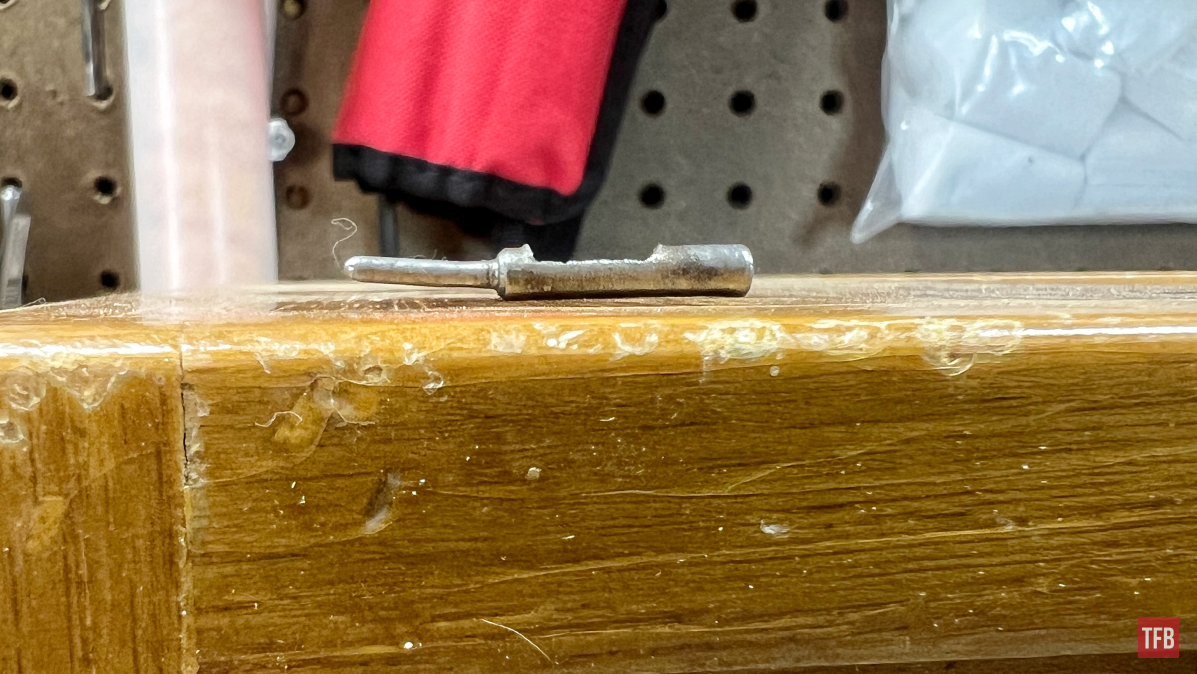
The bend in the original firing pin is sketchy enough.
The bottom and final line with these guns is almost anything can go wrong with them. Especially nowadays given their age. They are not built to last this long.
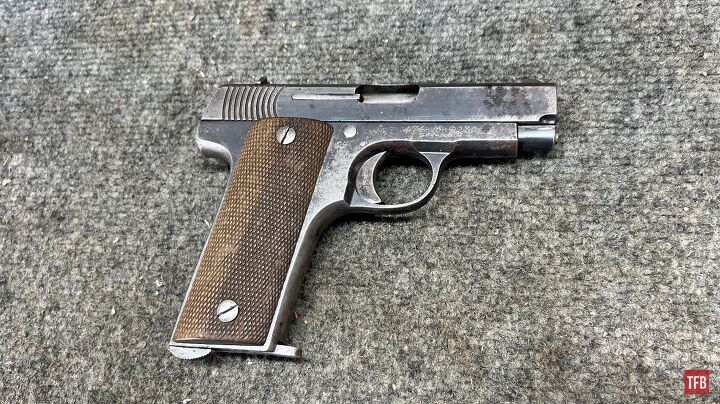
Conclusion: The 1915 Spanish Ruby Pistol
The Ruby Pistol despite its flaws had potential and I am sure served many soldiers well. It had forward-thinking features like a detachable magazine in the grip and a captive recoil spring. 32 ACP is unimpressive today but back then it was even with the Lebel Revolver’s cartridge. If I had nothing I would still pick it up. It surprisingly feels good. BUT out of all the guns I have, it is one that I hesitate to shoot too much.

As always, thank you for reading TFB! Be safe out there, have fun while shooting, and we will see you next time for the TFB Armorer’s Bench! Also, let us know what you think in the comments below! We always appreciate your feedback.










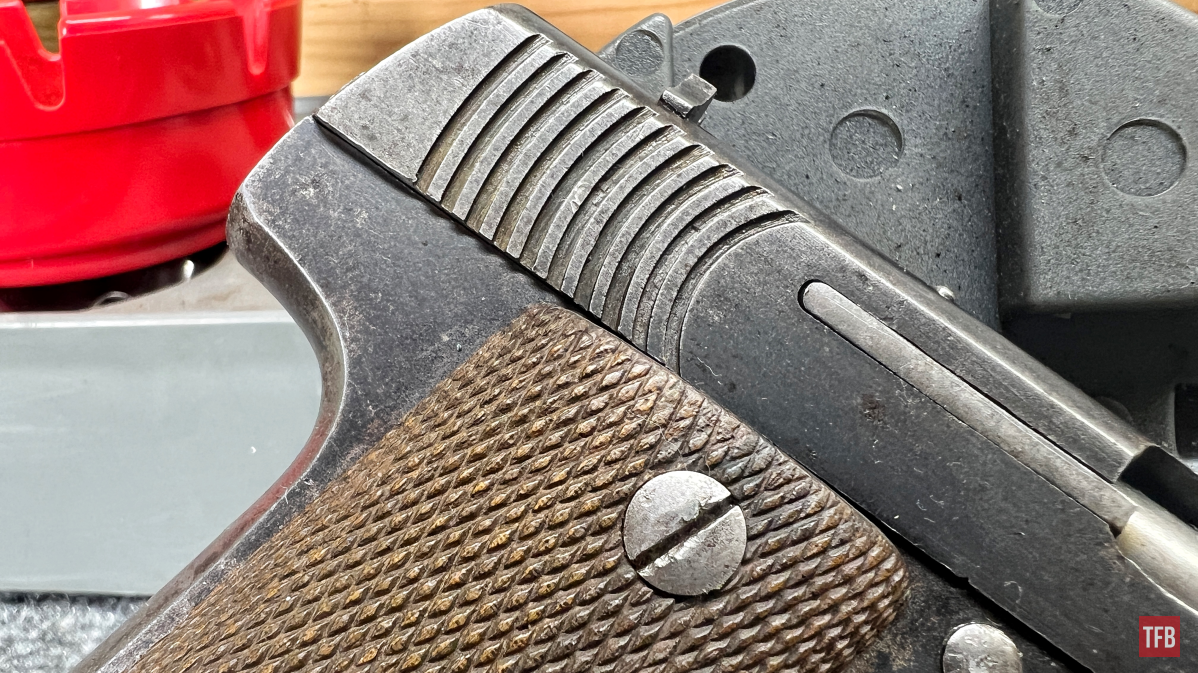



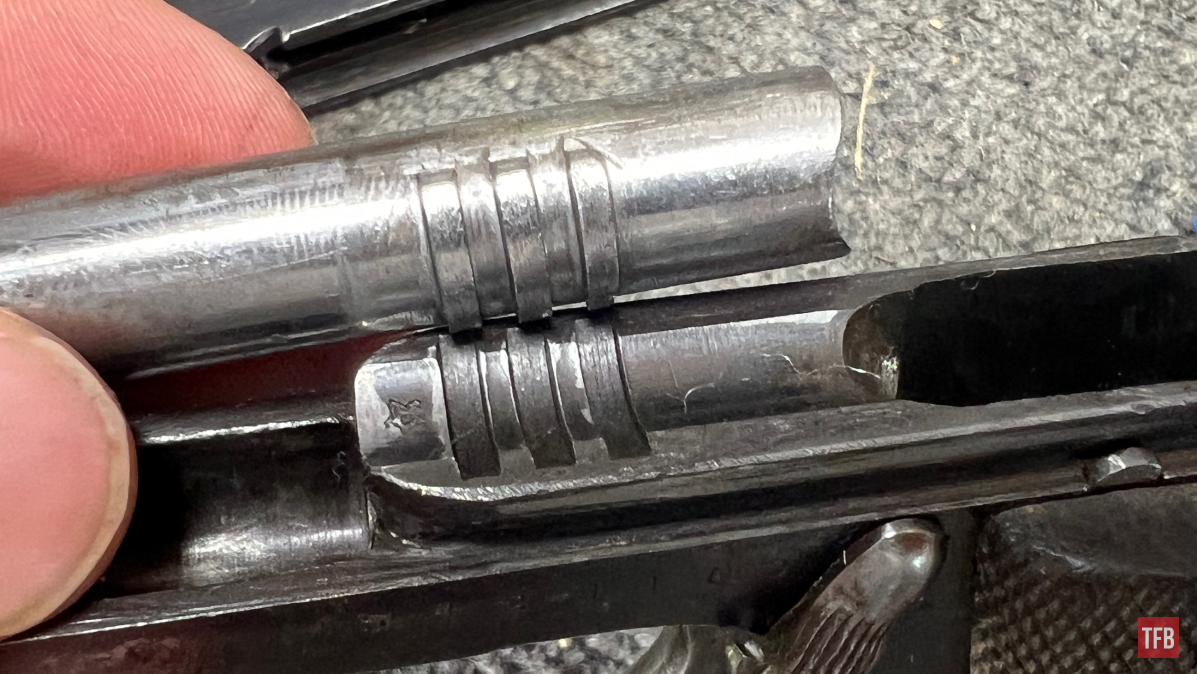
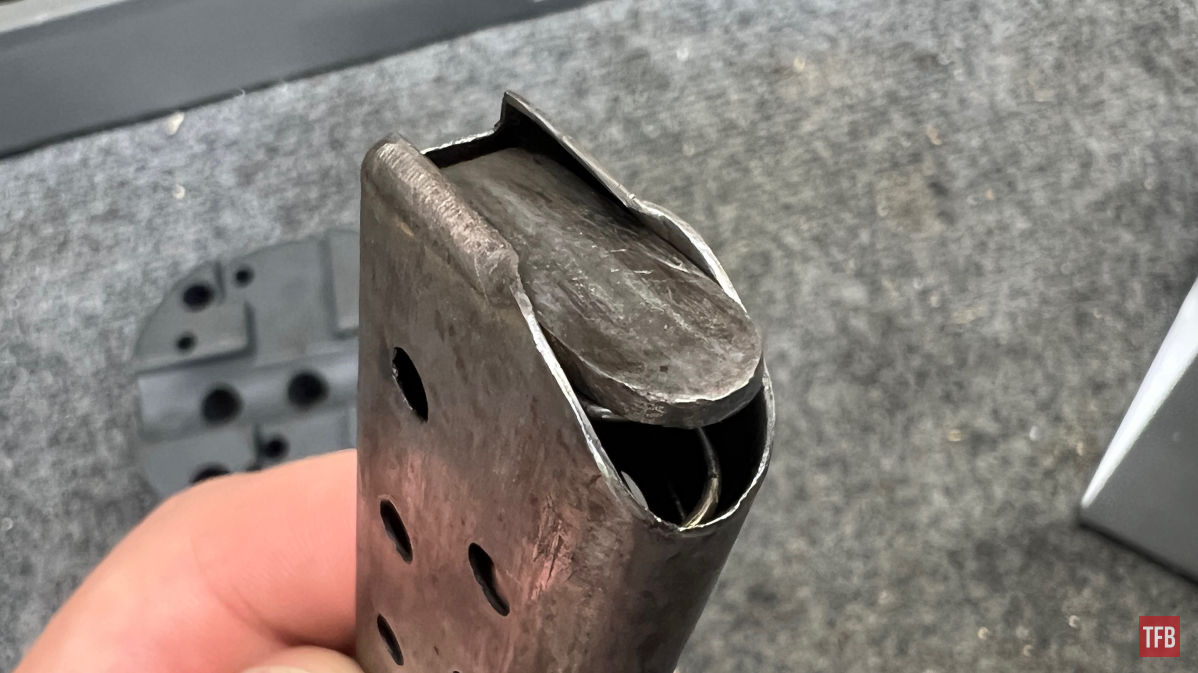
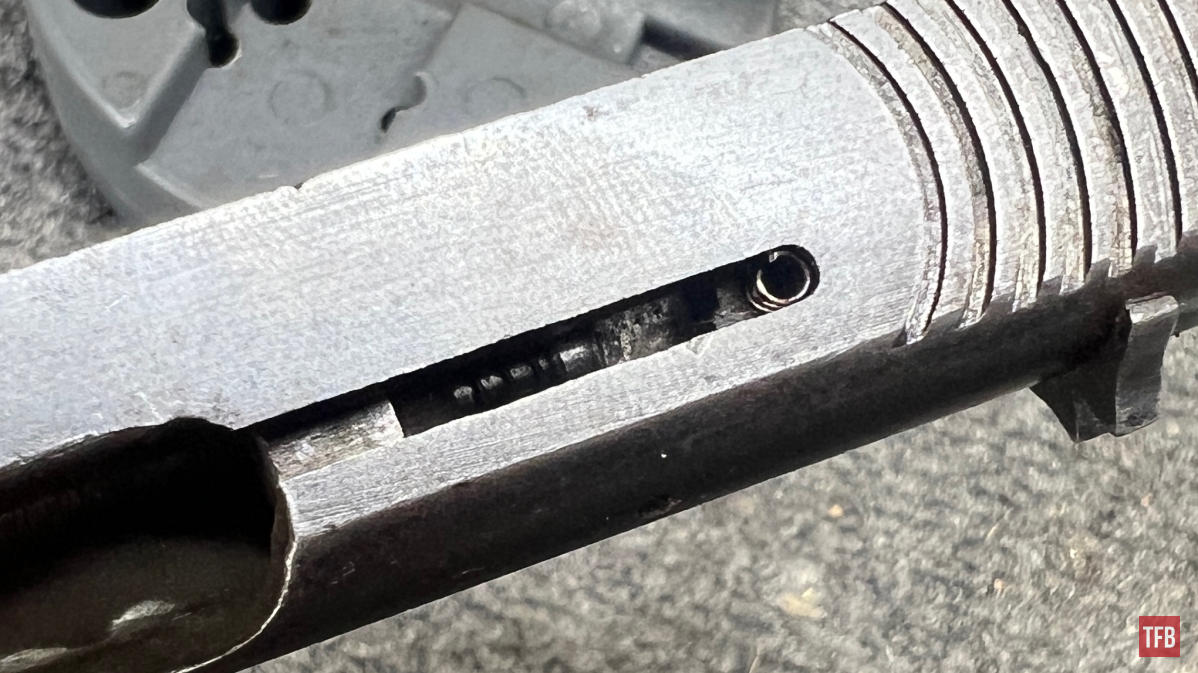
 Your Privacy Choices
Your Privacy Choices
